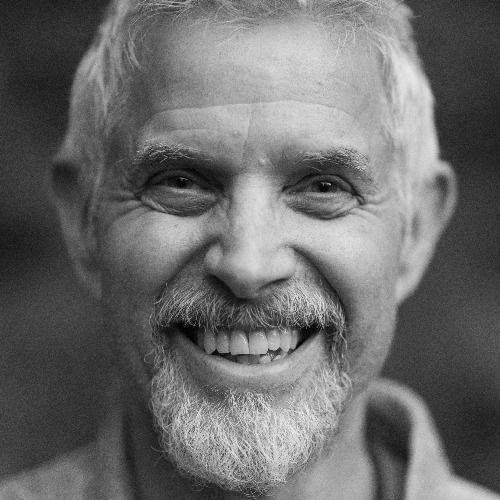Episode 137
137. Will These New Physician Conflicts of Interest Put YOU in Luigi Mangioni's Crosshairs?
New value based reimbursement formulas create a new form of conflict of interest that put doctors like us in the same ethical dilemma as insurance companies. It's a whole new form of ethical compromise you must be aware of ... because Luigi Mangioni and his millions of fans are watching us.
Physicians have long been respected as trusted professionals, but the evolution of healthcare payment models is creating new ethical tensions.
Traditionally, conflicts of interest came from performing procedures for financial gain. But now, under capitation and full-risk contracts, a different kind of conflict is emerging—one that pressures doctors to withhold necessary care.
This episode unpacks how these financial incentives can put providers at odds with their own patients’ best interests in a whole new way.
In this episode you will discover:
~~ How to recognize the hidden conflicts of interest that have always existed in medicine.
~~ How value-based care models introduce new ethical dilemmas for providers.
~~ A simple, powerful way to address these concerns with your leadership—without putting your career at risk.
Press play now to uncover the unseen financial forces shaping modern healthcare—and how to navigate them without compromising your integrity.
~~~~~
Book a Discovery Session to Optimize Your Leadership Skill Set
https://bit.ly/SPB-POD-Discovery
~~~~~
Explore physician leadership tools and strategies to stop physician burnout, enhance physician wellness and give you the power of personal influence in the C-Suite. All the tools you need to play your role in leading the charge to wellness - at three levels - for you, your teams and your entire organization.
Transcript
With the rise in capitation, full-risk contracting, and value-based care, there has been a tectonic shift in the conflicts of interest physicians and healthcare delivery organizations are exposed to.
In this episode, you'll discover a new source of conflict of interest that could put you squarely in the crosshairs of someone like Luigi Mangione—who, for the very same reason, gunned down an insurance executive in broad daylight in Manhattan. You don’t want to be in his crosshairs.
So let’s talk about this now. Check it out.
Classic Conflicts of Interest in Medicine
Doctors and healthcare organizations have always faced conflicts of interest when making decisions. These conflicts are simple to understand, yet they are so pervasive that you may not notice them until I point them out.
Traditionally, conflicts of interest in medicine have been associated with the financial incentives tied to performing procedures. Physicians who recommend a procedure also stand to benefit financially from performing it.
Take, for example, an orthopedic surgeon diagnosing a patient with bone-on-bone arthritis in their hip. A completely unbiased recommendation would sound something like this:
"You need a total hip replacement, but since I would financially benefit from performing the surgery, I can't in good conscience recommend it myself. Instead, I’ll refer you to a completely unaffiliated surgeon across town."
Of course, that never happens. It sounds absurd because it goes against the standard practice of medicine, where continuity of care is considered a priority. But the financial conflict of interest remains.
Hospitals also engage in self-dealing. They often push procedures to be performed in their inpatient facilities rather than outpatient surgery centers because they can collect the lucrative facility fees.
This is Type 1 conflict of interest—an error of commission—where action is taken with a financial benefit in mind.
A New Conflict: The Shift to Capitation and Full-Risk Contracting
Traditionally, fee-for-service payment models created conflicts by incentivizing doctors to perform more procedures. But now, with the shift toward capitation and full-risk contracting, a new conflict of interest has emerged.
In capitation, healthcare organizations receive a fixed payment per patient at the start of each month, regardless of the care provided. Any money left over at the end of the month is kept as profit.
This creates the opposite incentive—an error of omission—where doctors and healthcare organizations may withhold necessary care to maximize profits.
This puts healthcare providers in the same position as insurance companies, which are notorious for denying claims and delaying payments to boost their bottom line. It’s the same dynamic that drove Luigi Mangione to his breaking point, and it’s why a large portion of the population celebrated his actions.
You don’t want to be on the wrong side of that anger.
The Moral Injury of Value-Based Care
Doctors have an acute sense of hypocrisy. When a hospital’s mission statement claims to provide "the highest quality care," but the financial model incentivizes denying care, that hypocrisy becomes unbearable.
This creates moral injury—when you know the right thing to do for a patient, but the system prevents you from doing it. And now, as healthcare groups move toward full-risk contracts, they will increasingly be held accountable not just for providing care, but for withholding it.
If you're feeling angry or uncomfortable with these contradictions, trust your instincts. Your feelings are spot on.
A Simple Question to Challenge the System
When you recognize this conflict in your own organization, take a breath and ask a simple question:
"Hey, I’m not a big finance guy or anything, but I have a question. Maybe you can help me out. Our mission statement says we’re here to provide the highest quality care, but I notice that we’re doing something different. What’s that all about?"
And then—stay silent. Let leadership explain the conflict.
Final Thoughts
These shifts in healthcare payment models bring new ethical dilemmas for physicians. Be aware. If something smells fishy, it probably is.
Until next time—keep breathing, and have a great rest of your day.

